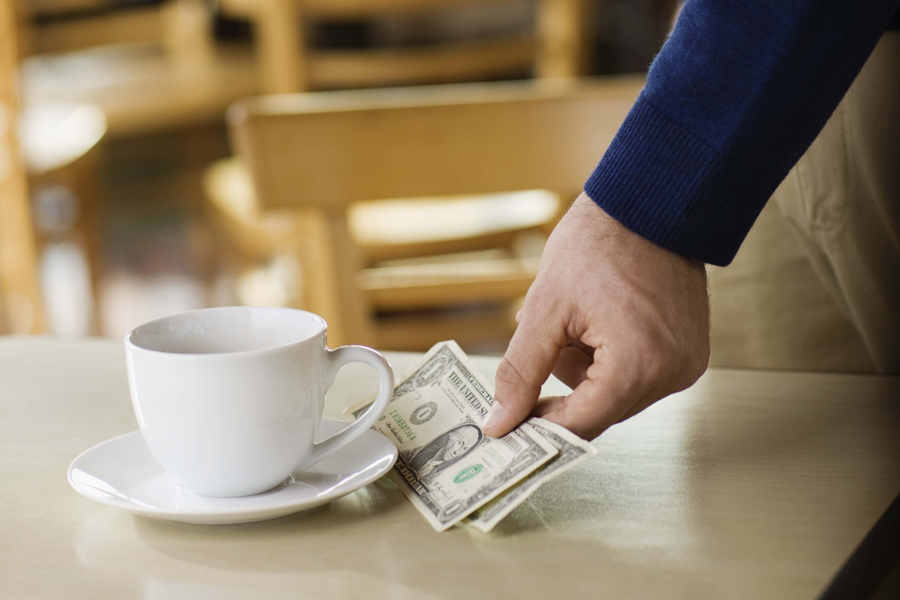Waiters to Get Minimum Wage Increase—But Should Tipping Just End?

The New York State minimum wage for food service workers stands at just $5 an hour, which is $3.75 short of the standard minimum wage. But lo! The New York State Wage Board is recommending a new minimum of $7.50, and it could take effect within a year.
However, the current proposal would allow restaurants to pay only $6.50 per hour if a worker’s wages including tips works out to above the standard minimum wage, which is $8.75 now and will increase to $9 in 2016. As The New York Times points out, waiters would be penalized for their tips. The Times goes as far as comparing the proposal to legalized wage theft.
Wage theft is a real problem. Too often stories arise of a restaurant paying not just waiters, bartenders and bus boys from the tips, but others whose wages are not based on tips, such as dishwashers and even managers. And then there are the misleading “service charges” added on to a check, which appear to be gratuities, but are not—leading to waiters being short-changed.
Waiters who are earning more than the minimum wage often believe they can’t complain. But when the tips customers leave for them are being divided up in unlawful ways, they certainly can complain and bring lawsuits.
And then there is a small theft that the victims turn a blind eye too, because it doesn’t amount to much. For example, being required to arrive at work 15 minutes prior to the beginning of their shift for a pre-shift meeting—and not being allowed to clock in until the shift officially begins. In what other industry would hourly workers agree to work an extra quarter of an hour without being compensated?
It seems there is always something sleazy going on with tips. Restaurants collecting the tips, then not dolling them out correctly. Waiters making bank in tips, but failing to report the income on their tax returns. Customers walking out without tipping after great service, and being completely within their rights.
Is it time to give up on tipping, and just pay waiters a fair hourly wage?
Remember the ’90s, when it was customary to tip 15%? By the ’00s, the custom rose to 18%, and many restaurants began to make an 18% gratuity for parties of eight or more. Now, many people—especially waiters—consider anyone who tips short of 20% to be “cheap.” And if the service was actually good, you should consider tipping closer to 25% if you ever want to show your face there again.
Should you tip on the food and drink bill, or on the total after the tax is added? Auto-gratuities are tacked onto the pre-tax bill, but a waitress will tell you that you should be tipping post-tax.
To put it in perspective:
If your bill was $100, after tax the total becomes $108.63, based on sales tax in Suffolk County.
Tipping 20% on the pre-tax bill works out to $20. Tipping post-tax is $21.73. And you better round up to $22, because precision in tipping makes you look cheap even when you are already being generous. Sure, it’s only a $2 difference. But can you believe you just tipped 22% for mediocre service?
How is it that the appropriate percentage to tip has inflated over the past 20 years? From 15%, to 18%, to 20% and beyond. That’s not how percentages are supposed to work.
The price of a meal at a restaurant has inflated. A meal that used to cost $50 now cost $100. The waiter’s tip, if maintained at 15%, would have doubled. Increasing the percentage on top of inflation has asked patrons to pay a greater share of wages, while letting the restaurant owners off the hook.
Tipping at restaurants is unfair to all involved. It’s time to think about doing away with it altogether.
For more on the practice of tipping, watch this video, Why Tipping Should Be Banned:










